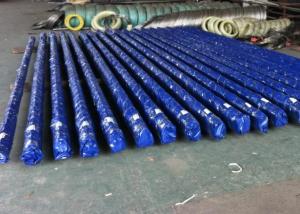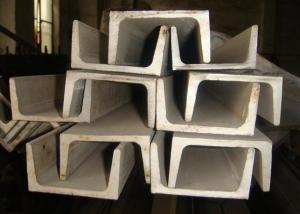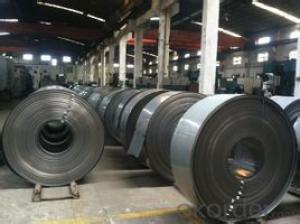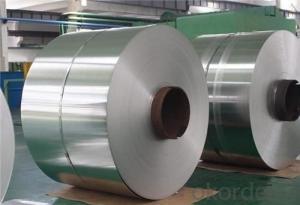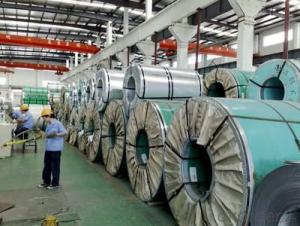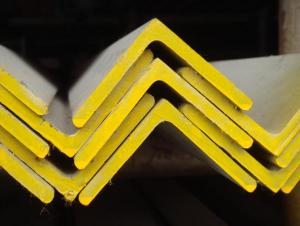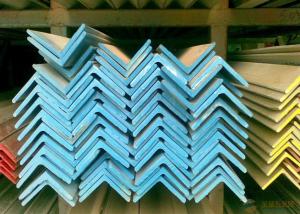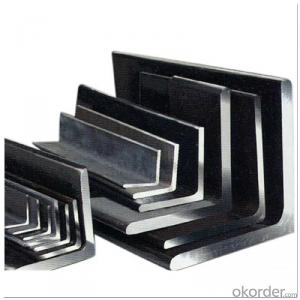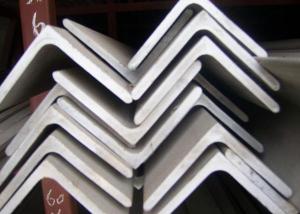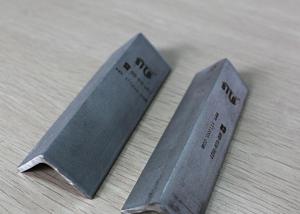Best Quality for Equal Stainless Steel Angles
- Loading Port:
- China Main Port
- Payment Terms:
- TT or LC
- Min Order Qty:
- 1 Ton m.t.
- Supply Capability:
- 500 Tons Per Month m.t./month
OKorder Service Pledge
OKorder Financial Service
You Might Also Like
Stainless Steel Angles
General Information of Stainless Steel Angles
1. Grade: SS200, 300,400 series
2. Size: 25×25×3 mm-100×100×10mm
3. Process: HRAP
4. Length: 2-6m
5. Shape: Equal
6. Delivery: within 20 days
7. MOQ: 1 ton
8. Certificate: ISO 9001:2008, SGS
9. Package: Standard Export Packing, or put into wooden boxes according to your requirement
10. Application: Construction, Marine, Industry and so on
Specification of Stainless Steel Angles
Name | Stainless Steel Angles | |||||
Standard | ASTM A554, A312, A249, A269 and A270 | |||||
Material Grade | 304,316,201,202, 316L,430 | |||||
Length | 6m or as customers' request | |||||
Tolerance | a) Thickness: +/-0. 15mm | |||||
b) Length:+/-4. 5mm - 0mm | ||||||
Surface | 180G, 320G, 400G Satin / Hairline(Matt Finish, Brush, Dull Finish) 400G, 500G, 600G or 800G Mirror finish | |||||
Application | Decoration construction, upholstery, industry instruments | |||||
Test | Squash test, Extended test, Water pressure test, Crystal rot test, Heat treatment, NDT | |||||
Chemical Composition of Material | Composition Material | 201 | 202 | 304 | 316 | 430 |
C | ≤0.15 | ≤0.15 | ≤0.08 | ≤0.08 | ≤0.12 | |
Si | ≤1.00 | ≤1.00 | ≤1.00 | ≤1.00 | ≤1.00 | |
Mn | 5.5-7.5 | 7.5-10 | ≤2.00 | ≤2.00 | ≤1.00 | |
P | ≤0.06 | ≤0.06 | ≤0.045 | ≤0.045 | ≤0.040 | |
S | ≤0.03 | ≤0.03 | ≤0.030 | ≤0.030 | ≤0.030 | |
Cr | 16-18 | 17-19 | 18-20 | 16-18 | 16-18 | |
Ni | 3.5-5.5 | 4-6 | 8-10.5 | 10-14 | ||
Mo | 2.0-3.0 | |||||
Mechanical Property | Material Item | 201 | 202 | 304 | 316 | |
Tensile Strength | ≥535 | ≥520 | ≥520 | ≥520 | ||
Yield Strength | ≥245 | ≥205 | ≥205 | ≥205 | ||
Extension | ≥30% | ≥30% | ≥35% | ≥35% | ||
Hardness (HV) | <253 | <253 | <200 | <200 | ||
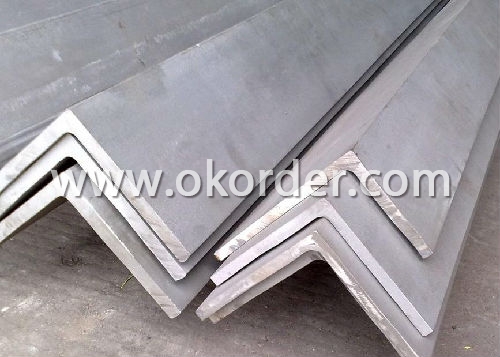
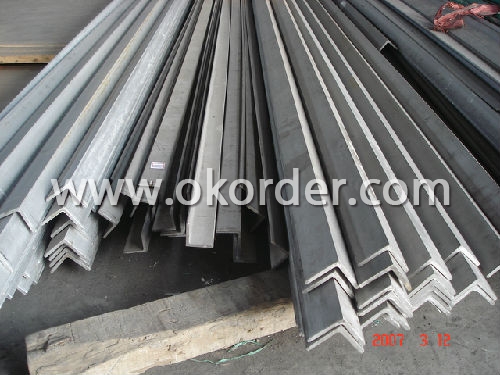
- Q:Are stainless steel angles available in different grades?
- Different grades of stainless steel angles can be found, each offering specific properties and characteristics. Stainless steel is a versatile material widely used in various applications because of its resistance to corrosion, strength, and aesthetic appeal. The classification of stainless steel grades is based on their chemical composition. Some commonly available grades for stainless steel angles are 304, 316, 321, and 430. Each grade possesses unique properties suitable for specific applications. For instance, grade 304 is ideal for the food and beverage industry due to its excellent corrosion resistance and ease of cleaning. On the other hand, grade 316 contains molybdenum, enhancing its resistance to corrosion in marine and chemical environments. The choice of grade depends on the specific requirements of the application, including desired corrosion resistance, strength, and durability levels.
- Q:What are the different alloying elements in stainless steel angles?
- The different alloying elements in stainless steel angles can include chromium, nickel, manganese, molybdenum, and sometimes other elements such as titanium or copper.
- Q:Can stainless steel angles be used in the aerospace industry?
- Yes, stainless steel angles can be used in the aerospace industry. Stainless steel is known for its high strength, corrosion resistance, and durability, which makes it a suitable material for various applications in the aerospace industry. Stainless steel angles can be used in the construction of aircraft structures, engine components, and other critical aerospace parts. The corrosion resistance of stainless steel ensures that these angles can withstand the harsh environments and exposure to moisture and chemicals often found in aerospace applications. Additionally, stainless steel's high strength-to-weight ratio makes it an ideal choice for lightweight yet sturdy structures in aircraft. Overall, stainless steel angles are a reliable and versatile material that meets the rigorous demands of the aerospace industry.
- Q:304 stainless steel 32mm in diameter and 3mm in thickness. How much pressure can one metre withstand? How can I calculate the pressure of a pipe?
- Depends on the specific specifications, the prices of different specifications201 of stainless steel is now considered as ordinary material, without magnetic or nickel. If you want high, you should use 304 stainless steel, 6.5 yuan more than 201 yuan a kilogram.
- Q:What are the standard finishes available for stainless steel angles?
- There are several standard finishes available for stainless steel angles. The most common ones include: 1. Mill finish: This is the standard finish for stainless steel angles straight from the mill. It has a dull, gray appearance and is not very aesthetically pleasing, but it is functional and provides good corrosion resistance. 2. Brushed finish: This finish is achieved by brushing the stainless steel surface with an abrasive material. It creates a uniform and shiny appearance with fine lines running in one direction. Brushed finishes are popular in architectural and decorative applications. 3. Polished finish: This finish involves polishing the stainless steel surface to a high shine. It removes scratches and imperfections, resulting in a mirror-like appearance. Polished finishes are often used in decorative and high-end applications. 4. Satin finish: This finish is similar to a brushed finish but has a smoother and less reflective appearance. It is achieved by using a fine abrasive material to create a soft and matte finish. Satin finishes are commonly used in architectural and industrial applications. 5. Bead blasted finish: In this finish, small glass beads are blasted onto the stainless steel surface under high pressure. It creates a uniform, matte appearance with a slightly rough texture. Bead blasted finishes are often used in applications where a low reflectivity and good grip are required. 6. PVD coating: PVD (Physical Vapor Deposition) is a process that involves depositing a thin layer of a colored material onto the stainless steel surface. This can create a wide range of colors and finishes, including gold, black, bronze, and more. PVD coatings are commonly used in decorative and architectural applications. These are just a few examples of the standard finishes available for stainless steel angles. The choice of finish depends on the desired appearance, functionality, and specific application requirements.
- Q:Can stainless steel angles be used in the production of street bollards?
- Stainless steel angles are certainly suitable for manufacturing street bollards. This material is known for its exceptional durability and resistance to corrosion, which makes it an ideal choice for outdoor purposes like street bollards. By incorporating angles, the bollard's structure can be reinforced, ensuring strength and stability. Furthermore, the visually pleasing appearance of stainless steel can elevate the overall aesthetic of the street bollards. In conclusion, stainless steel angles are a fitting choice for producing street bollards due to their durable nature, resistance to corrosion, and attractive design.
- Q:Can stainless steel angles be used in pharmaceutical laboratories?
- Yes, stainless steel angles can be used in pharmaceutical laboratories. Stainless steel is a highly durable and corrosion-resistant material, making it suitable for use in environments where cleanliness and sterility are crucial, such as pharmaceutical laboratories. Additionally, stainless steel is easy to clean and maintain, making it an ideal choice for equipment and fixtures in these settings.
- Q:Can stainless steel angles be used in pharmaceutical applications?
- Yes, stainless steel angles can be used in pharmaceutical applications. Stainless steel is a widely used material in the pharmaceutical industry due to its excellent corrosion resistance, hygienic properties, and ease of cleaning. Stainless steel angles can be used for various applications such as equipment supports, frames, and structures, providing durability and maintaining the purity of pharmaceutical products.
- Q:What are the different types of surface treatments for stainless steel angles?
- There are several different types of surface treatments available for stainless steel angles. 1. Passivation: This is a common treatment that involves the use of chemicals to remove any iron particles or contaminants from the surface of the stainless steel. It helps to improve the corrosion resistance of the material. 2. Pickling: Pickling involves the immersion of the stainless steel angles in a pickling solution, usually an acid, to remove any oxide scale or heat tint. This treatment helps to restore the stainless steel's corrosion resistance and enhances its appearance. 3. Electropolishing: This is an electrochemical process that removes a thin layer of material from the surface of the stainless steel angles. It helps to improve the surface finish, remove any surface irregularities, and enhance the corrosion resistance of the material. 4. Coating: Stainless steel angles can also be coated with various materials to provide an additional layer of protection. Common coatings include epoxy, powder coating, or paint. These coatings not only provide corrosion resistance but also improve the aesthetic appearance of the stainless steel angles. 5. Grinding and polishing: Grinding and polishing are mechanical treatments that can be used to enhance the surface finish of stainless steel angles. These processes help to remove any surface imperfections, scratches, or blemishes, resulting in a smooth and shiny surface. Each of these surface treatments offers unique benefits and is suitable for different applications. The choice of treatment depends on factors such as the desired appearance, corrosion resistance requirements, and the intended use of the stainless steel angles.
- Q:What are the fire resistance properties of stainless steel angles?
- Stainless steel angles possess excellent fire resistance properties due to their composition and structural characteristics. Stainless steel is an alloy that contains a high percentage of chromium, which forms a thin, protective layer of chromium oxide on the surface of the metal when exposed to oxygen. This passive layer acts as a barrier, preventing further oxidation and corrosion. In terms of fire resistance, stainless steel angles have several advantages. Firstly, they have a high melting point, typically around 1400-1450°C (2552-2642°F), which makes them capable of withstanding intense heat for prolonged periods without losing their structural integrity. This property is crucial in fire situations where materials need to maintain their strength to support structural elements. Secondly, stainless steel angles have low thermal conductivity, meaning they do not readily transfer heat. This characteristic helps to minimize the spread of fire and reduces the risk of structural failure due to heat transfer. Additionally, stainless steel does not emit toxic gases or smoke when exposed to fire, making it a safer option in terms of human health and environmental impact. Furthermore, stainless steel angles exhibit excellent corrosion resistance even at high temperatures, which further enhances their fire resistance properties. This resistance to corrosion ensures that the structural integrity of stainless steel angles will not be compromised, even when exposed to fire and the associated heat and moisture. Overall, stainless steel angles are highly desirable for fire-resistant applications, such as in the construction of buildings, infrastructure, and industrial facilities. Their ability to withstand high temperatures, low thermal conductivity, and corrosion resistance make them a reliable and durable choice in fire-prone environments.
1. Manufacturer Overview |
|
|---|---|
| Location | Jiangsu,China |
| Year Established | 2002 |
| Annual Output Value | Above US$ 8 Million |
| Main Markets | China, East Asia, |
| Company Certifications | ISO9001:2000; |
2. Manufacturer Certificates |
|
|---|---|
| a) Certification Name | |
| Range | |
| Reference | |
| Validity Period | |
3. Manufacturer Capability |
|
|---|---|
| a)Trade Capacity | |
| Nearest Port | Shanghai |
| Export Percentage | 40% |
| No.of Employees in Trade Department | 30 People |
| Language Spoken: | English;Chinese |
| b)Factory Information | |
| Factory Size: | Above 26,000 square meters |
| No. of Production Lines | Above 6 |
| Contract Manufacturing | OEM Service Offered;Design Service Offered |
| Product Price Range | Average |
Send your message to us
Best Quality for Equal Stainless Steel Angles
- Loading Port:
- China Main Port
- Payment Terms:
- TT or LC
- Min Order Qty:
- 1 Ton m.t.
- Supply Capability:
- 500 Tons Per Month m.t./month
OKorder Service Pledge
OKorder Financial Service
Similar products
New products
Hot products
Hot Searches
Related keywords
